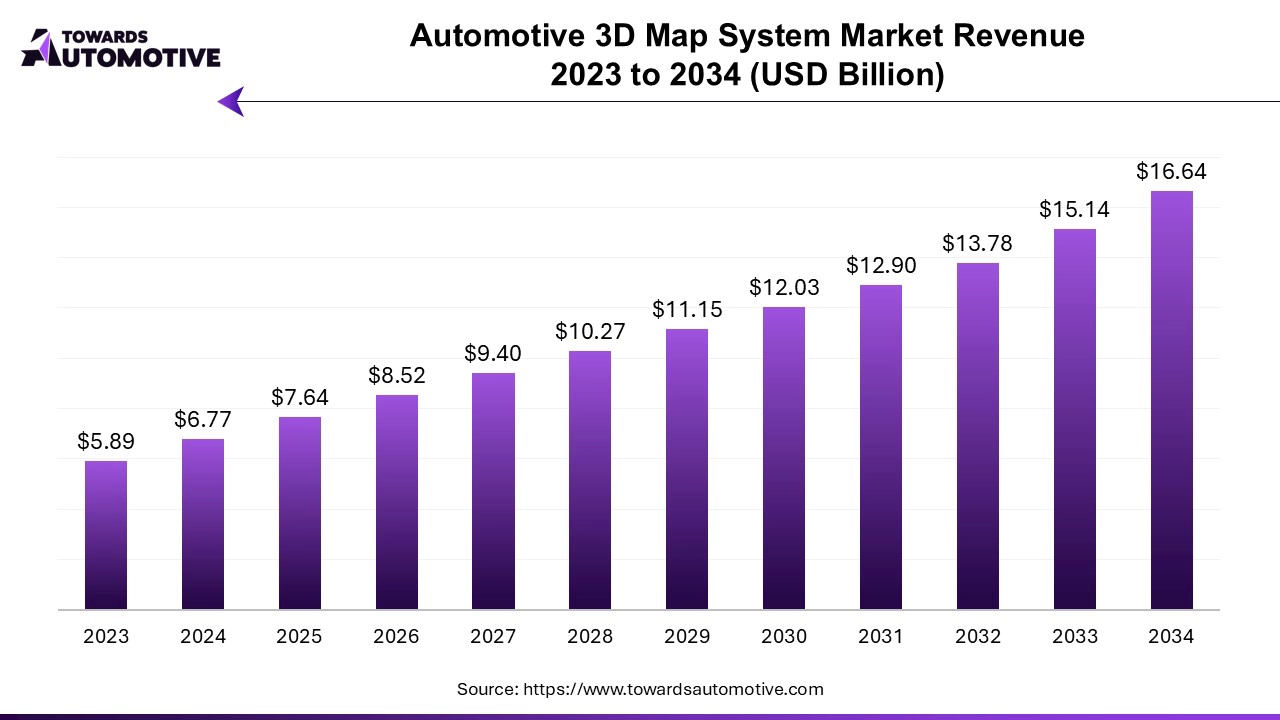AI is revolutionizing various industries, and one of its most impactful applications is in the automotive sector, particularly in the realm of 3D map systems. These systems, essential for navigation and autonomous driving, are benefiting greatly from the integration of artificial intelligence. AI plays a crucial role in enhancing the accuracy, functionality, and real-time adaptability of mapping technologies, taking automotive navigation to unprecedented levels.
Market Growth and Future Outlook
The global automotive 3D map system market is experiencing rapid growth. In 2024, the market size is valued at USD 6.77 billion and is projected to reach USD 16.64 billion by 2034, growing at a robust CAGR of 9.90% over the next decade. This growth is largely driven by advancements in AI technology, which is transforming how 3D maps are used in automotive applications, particularly in autonomous driving and navigation.

Get All the Details in Our Solution – Download Brochure @ https://www.towardsautomotive.com/download-brochure/1160
Continuous Processing and Updating of 3D Maps
One of the primary ways AI contributes to the automotive 3D map system market is through the continuous processing and updating of 3D maps. Modern vehicles are equipped with a range of sensors, cameras, GPS devices, and LiDAR systems that collect vast amounts of data while on the road. AI algorithms analyze this data to create high-definition, up-to-date maps that offer detailed information on road conditions, traffic patterns, and environmental factors, such as weather.
These AI-powered systems can adapt to changes in the environment in real time, ensuring that the maps stay accurate and relevant, no matter the conditions. This is especially important in fast-evolving urban environments or on roads subject to frequent changes like construction zones or accidents.
Enhancing Autonomous Driving Capabilities
AI is particularly transformative in the context of autonomous driving. It allows vehicles to not only interpret 3D maps but to do so in real time. This enables the vehicle to understand its surroundings, recognize objects, detect environmental changes, and predict potential hazards or obstacles.
By processing the 3D maps, AI helps vehicles navigate complex environments, make informed decisions, and maintain safety. AI-powered 3D maps can also provide lane guidance, offer real-time route adjustments, and suggest alternate routes to avoid traffic. This level of adaptability ensures that the driving experience is not only safer but also more efficient.
Integration with Advanced Driver Assistance Systems (ADAS)
AI’s role doesn’t stop at simply improving the 3D map systems. It also enables integration with other vehicle systems, such as Advanced Driver Assistance Systems (ADAS). These systems, which help drivers by providing features like automatic braking, lane-keeping assistance, and adaptive cruise control, become much more responsive and predictive when paired with AI-powered 3D maps.
With AI, these integrated systems can learn and adapt from real-time data, continuously improving their performance and reliability. This integration makes the entire driving experience more seamless, enhancing the safety and convenience of both autonomous and human-driven vehicles.
A Leap Forward: Genesys’ AI-Based Navigation Map
In June 2024, Genesys made a significant step forward by launching an AI-based navigation map for automotive applications. Designed to provide precise navigation, this new map aims to enhance the driving experience by integrating AI’s real-time adaptability with high-definition 3D mapping technology.
The map, developed with the latest advancements in AI, is set to transform how drivers interact with their vehicles and the surrounding environment. By offering real-time data processing, the map ensures that users are always aware of road conditions, potential obstacles, and optimal routes, providing a smoother, more reliable navigation experience.
The Future of Automotive 3D Map Systems
As AI continues to evolve, the potential for automotive 3D map systems will only expand. These systems will not only become more intelligent but also more interconnected with other technologies within the vehicle. From improving the accuracy of navigation to supporting autonomous driving capabilities, AI’s impact on 3D map systems is undeniable.
In the future, we can expect AI-powered 3D maps to be a cornerstone of autonomous and connected vehicles. With continuous updates, improved accuracy, and seamless integration with other systems, AI will help shape a safer and more efficient driving experience, bringing us closer to fully autonomous transportation.
The ongoing advancements, such as those demonstrated by Genesys’ AI-based navigation map, signal a promising future for AI in the automotive industry—one that is set to change the way we navigate the world on the road. With the automotive 3D map system market set to grow significantly, from USD 6.77 billion in 2024 to USD 16.64 billion by 2034, the role of AI will continue to be pivotal in driving innovation and growth in the sector.
Invest in Our Premium Strategic Solution @ https://www.towardsautomotive.com/price/1160
You can place an order or ask any questions, please feel free to contact us at sales@towardsautomotive.com
Explore the comprehensive statistics and insights on automotive industry data and its associated segmentation: Get a Subscription
For Latest Update Follow Us: https://www.linkedin.com/company/towards-automotive
